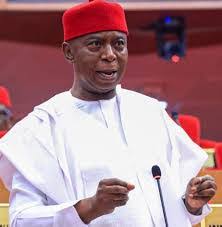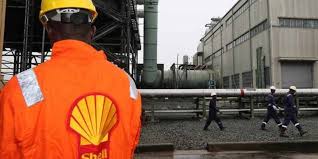Oil & Energy
The Future May Not Be As Electric As We Think

Virtually every single forecast about the future of transport focuses on its electrification – on the idea that Electric Vehicles will take over roads, displacing the internal combustion engine Internal Combustion Engine (ICE) and making it history.
Not everyone agrees, however, and that includes Renault, China’s Geely and, as of last month, Saudi Aramco. The three are investing in a company that develops powertrain technology for internal combustion engine vehicles. The future may not be as electric as we may expect.
Horse Powertrain came into existence at the end of May as a 50:50 joint venture between Renault and Geely. At the time, Renault’s Chief Executive said the company would aim to become a leader in “ultra-low emission internal combustion engines and high economy hybrid technologies”.
Decarbonisation, then, remains the top priority. Yet Renault and Geely are opting for an alternative way to achieve it, through fuel efficiency and other tech advancements in internal combustion rather than through total electrification.
It is no wonder Aramco is joining the party, especially in light of the recent performance of its EV darling, Lucid Motors.
Lucid has seen its share price plummet from over $50 apiece to less than $9 in three years and has missed its own delivery target for the first half of this year even though it boasted record deliveries of 2,394 cars.
The Saudi oil giant likes to spread its eggs across several baskets, and it looks like the ICE basket is still quite popular. People are still buying a lot more internal combustion engine cars than electric vehicles.
A lot of EV drivers want to go back to their internal combustion engine car. Things are not looking good for the electrification of transport, with the normal glitches of new technology still being sorted out. However, they are looking as robust as ever for internal combustion.
“It will be incredibly expensive for the world to completely stamp out, or do without internal combustion engines”, Yasser Mufti, Executive Vice-President at Saudi Aramco, who was in charge of the Horse Powertrain deal, told the Financial Times.
“If you look at affordability and a lot of other factors, I do think they will be around for a very, very long time”, he stated.
Affordability is indeed one of the factors that make drivers loyal to the ICE technology. For all the efforts EV makers have been putting into lowering the price of their electric vehicles, and for all the government support of the technology, EVs remain costlier than comparable internal combustion engine vehicles.
Of course, affordability is only part of the car equation. Another is fueling or charging time and on this, the ICE car once again beats the EV.
For all the talk about how convenient it was to charge your EV overnight in the comfort of your own garage, it has been dawning on forecasting EV bulls that globally, only a minority of drivers have a garage to charge an EV in, while most would need to rely on public chargers.
Also, only a minority of drivers would be willing to spend hours charging their car overnight or not.
Perhaps the best testimonial to the enduring power of the internal combustion engine were the latest car sales figures from China.
The world’s biggest market, China, has been breaking records in EV sales. This seems to have created a perception that half of all cars in China are electric. In fact, the reality is quite different.
Xinhua reported earlier this week that the total number of cars on Chinese roads had reached 440 million at the end of June. Of these, the data showed, new energy vehicles had a share of 24.72 million. Of these, 18.13 million were plug-in electric vehicles — what we commonly call EVs, and the rest were hybrids.
In percentage terms, then, EVs represent barely a 4.1% of the Chinese market. In other words, even in the world’s biggest EV market, with billions spent on charging infrastructure and making EVs dirt cheap, most drivers still prefer internal combustion vehicles.
“We believe that as far out as 2035, 2040 and even beyond 2040 we still see a significant number of ICE vehicles”, Matias Giannini, Chief Executive of Horse Powertrain, told the FT.
“More than half for sure, and up to 60 per cent of the population will still have some sort of an engine, whether it is pure ICE, a full hybrid or a plug-in hybrid”, he added.
The internal combustion engine has survived so long and remained the overwhelmingly dominant transportation technology for one simple reason: it has been superior to alternatives and its benefits have outweighed the costs consistently.
It is at the cost-benefit analysis state that the EV revolution tripped and fell — because it seems that no one bothered to do that analysis.
So, the market made it for them, with the EV surge celebrated loudly last year slowing down before the year was even over. Horse Powertrain may yet acquire new shareholders.
Slav writes for Oilprice.com.
By: Irina Slav
Oil & Energy
Nigeria Loses More Crude Oil Than Some OPEC Members – Nwoko

Nigeria’s losses due to crude oil theft has been said to be more significant than those of some other members of the Organisation of Petroleum Exporting Countries(OPEC).
The Chairman, Senate Ad- hoc Committee on Crude Oil Theft, Senator Ned Nwoko, made this known in an interview with newsmen in Abuja.
Nwoko noted with dismay the detrimental impact of the issue, which, he said include economic damage, environmental destruction, and its impact on host communities.
According to him, the theft was not only weakening the Naira, but also depriving the nation of vital revenue needed for infrastructure, healthcare, education and social development.
The Senator representing Delta North Senatorial District described the scale of the theft as staggering, with reports indicating losses of over 200,000 barrels per day.
Nwoko disclosed that the ad hoc committee on Crude Oil Theft, which he chairs, recently had a two-day public hearing on the rampant theft of crude oil through illegal bunkering, pipeline vandalism, and the systemic gaps in the regulation and surveillance of the nation’s petroleum resources.
According to him, the public hearing was a pivotal step in addressing one of the most pressing challenges facing the nation.
‘’Nigeria loses billions of dollars annually to crude oil theft. This is severely undermining our economy, weakening the Naira and depriving the nation of vital revenue needed for infrastructure, healthcare, education, and social development.
‘’The scale of this theft is staggering, with reports indicating losses of over 200,000 barrels per day more than some OPEC member nations produce.
‘’This criminal enterprise fuels corruption, funds illegal activities and devastates our environment through spills and pollution.
‘’The public hearing was not just another talk shop; it was a decisive platform to uncover the root causes of crude oil theft, bunkering and pipeline vandalism.
‘’It was a platform to evaluate the effectiveness of existing surveillance, monitoring, and enforcement mechanisms; Identify regulatory and legislative gaps that enable these crimes to thrive.
‘’It was also to engage stakeholders, security agencies, host communities, oil companies, regulators, and experts to proffer actionable solutions; and strengthen legal frameworks to ensure stricter penalties and more efficient prosecution of offenders”, he said.
Nwoko noted that Nigeria’s survival depended
Oil & Energy
Tap Into Offshore Oil, Gas Opportunities, SNEPCO Urges Companies

Shell Nigeria Exploration and Production Company Ltd. (SNEPCo) has called on Nigerian companies to position themselves strategically to take full advantage of the growing opportunities in upcoming offshore and shallow water oil and gas projects.
The Managing Director, SNEPCO, Ronald Adams, made the call at the 5th Nigerian Oil and Gas Opportunity Fair (NOGOF) Conference, held in Yenagoa, Bayelsa State, last Thursday.
Adams highlighted the major projects, including Bonga Southwest Aparo, Bonga North, and the Bonga Main Life Extension, as key areas where Nigerian businesses can grow their capacity and increase their involvement.
“Shell Nigeria Exploration and Production Company Ltd. (SNEPCo) says Nigerian companies have a lot to benefit if they are prepared to take advantage of more opportunities in its offshore and shallow water oil and gas projects.
“Projects such as Bonga Southwest Aparo, Bonga North and Bonga Main Life Extension could grow Nigerian businesses and improve their expertise if they applied themselves seriously to executing higher value contracts”, Adams stated.
Adams noted that SNEPCo pioneered Nigeria’s deepwater oil exploration with the Bonga development and has since played a key role in growing local industry capacity.
He emphasized that Nigerian businesses could expand in key areas like logistics, drilling, and the construction of vital equipment such as subsea systems, mooring units, and gas processing facilities.
The SNEPCO boss explained that since production began at the Bonga field in 2005, SNEPCo has worked closely with Nigerian contractors to build systems and develop a skilled workforce capable of delivering projects safely, on time, and within budget both in Nigeria and across West Africa.
According to him, this long-term support has enabled local firms to take on key roles in managing the Bonga Floating, Production, Storage and Offloading (FPSO) vessel, which reached a major milestone by producing its one-billion barrel of oil on February 3, 2023.
Oil & Energy
Administrator Assures Community Of Improved Power Supply

The Emohua Local Government Area Administrator, Franklin Ajinwo, has pledged to improve electricity distribution in Oduoha Ogbakiri and its environs.
Ajinwo made the pledge recently while playing host in a courtesy visit to the Oduoha Ogbakiri Wezina Council of Chiefs, in his office in Rumuakunde.
He stated that arrangements are underway to enhance available power, reduce frequent outages, and promote steady electricity supply.
The move, he said, was aimed at boosting small and medium-scale businesses in the area.
“The essence of power is not just to have light at night. It’s for those who can use it to enhance their businesses”, he said.
The Administrator, who commended the peaceful nature of Ogbakiri people, urged the Chiefs to continue in promoting peace and stability, saying “meaningful development can only thrive in a peaceful environment”.
He also charged the Chiefs to protect existing infrastructure while promising to address the challenges faced by the community.
Earlier, the Oduoha Ogbakiri Wezina Council of Chiefs, led by HRH Eze Goodluck Mekwa Eleni Ekenta XV, expressed gratitude to the Administrator over his appointment and pledged their support to his administration.
The chiefs highlighted challenges facing the community to include incessant power outage, need for new transformers, and the completion of Community Secondary School, Oduoha.
The visit underscored the community’s expectations from the LGA administration.
With Ajinwo’s assurance of enhancing electricity distribution and promoting development, the people of Oduoha Ogbakiri said they look forward to a brighter future.
By: King Onunwor

